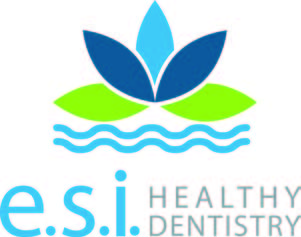Can I tell you a story?
One day, years ago, I was enjoying a hard granola bar. It was crunchy, nutty and delicious. At one point I heard something more than just a crunch. I broke part of my tooth. Being a dentist and having seen countless dental disasters, I feared the worst — losing a tooth. Luckily for me, the broken cusp of my upper right premolar was reparable. But many of my patients have fractured teeth the same way and had to have the tooth extracted.
Let’s face it; at some point many of us may have to lose a tooth. Whether it is because of trauma, advanced decay or gum problems, tooth loss is a common dental consequence. Tooth replacement is almost always a good idea. In the absence of a tooth, all of the other teeth have to increase their workload and that can put greater stress on them, potentially leading to more problems.
Tooth shifting is another unwanted phenomenon that occurs and that comes with a slew of other side effects. A great way to replace a single tooth is with a dental implant. Think of it as an artificial root that can support a crown. The crown is the part that looks and feels like a tooth, while the implant is installed into the bone, just under the gum. Crowns are usually made of ceramic. But what about implants? There are titanium and zirconia (ceramic) implants. What’s better?
P.I. Branemark was a Swedish orthopedic surgeon in the 1960’s who wanted to study bone healing in rabbit tibias. He started his experiment by placing titanium screws in rabbit leg bones; after a couple of months he was going to remove them and evaluate the healing. However, he was unable to remove the titanium screws. Thinking he did something wrong, he repeated the experiment and after multiple failed attempts, the proverbial light bulb went off: BONE LOVES TITANIUM!!! He called the process osseointegration, and that was the birth of implant dentistry.
Since then, we have been placing titanium implants with a success rate well over 95%. Less than a decade ago, zirconia implants came into the market. With patients and practitioners alike desiring a non-metallic option, this material seemed very promising. What we found was that they did very well for 3-4 years. After that period of time they developed microfractures which got colonized by bacteria and caused rapid bone loss and the implants failed miserably. Although the industry has been taking great strides of progress, this modality does not have the successful track record of titanium implants.
Ideally, if we could “grow” teeth in an accelerated, natural way that would be the best option. While we are doing research on this, we are probably at least 50 years away. Until then, if I ever needed a tooth replacement, I would choose a titanium implant with a zirconia crown.
My message to you is take care of yourself. Eat healthy, exercise, take vitamins and supplements, drink a lot of water, practice good hygiene and take responsibility of your own health. Practice good oral hygiene, floss daily, keep your regular dental exams so you can prevent bad things from happening. Nevertheless, if something bad happens, know that there is hope and that we can take care of it.
 Jimmy Kilimitzoglou, DDS, FACD, FPFA, DABOI, MAGD, FAAID, FICOI ESI
Jimmy Kilimitzoglou, DDS, FACD, FPFA, DABOI, MAGD, FAAID, FICOI ESI
Healthy Dentistry 42 Terry Road, Smithtown, NY 11787
Tel (631) 979 7991 / Fax (631) 979 7992
dental@esihealthydentistry.com
– A D V E R T O R I A L –




















